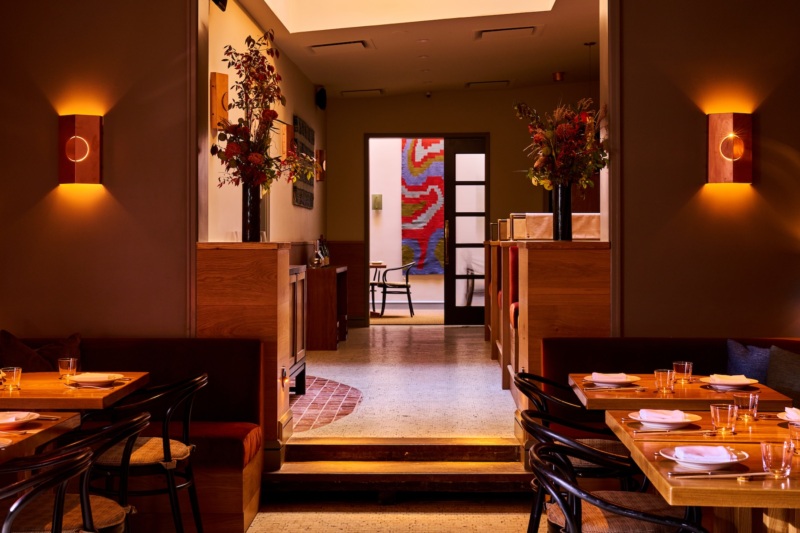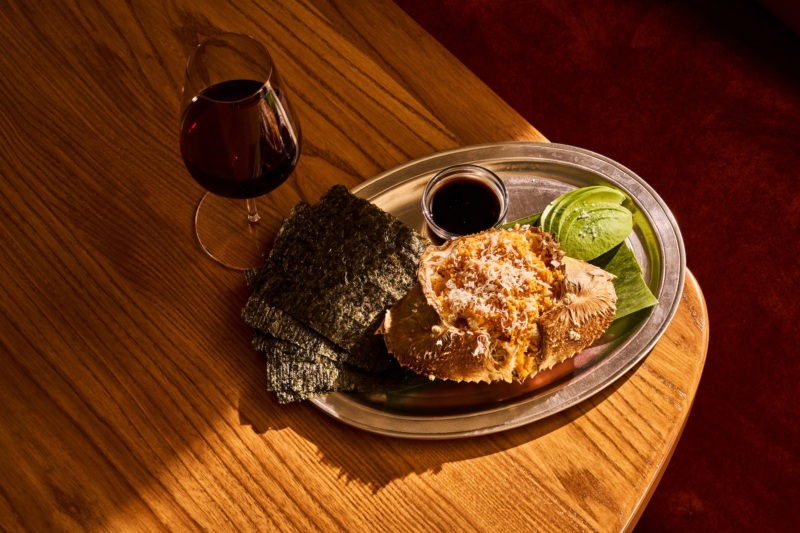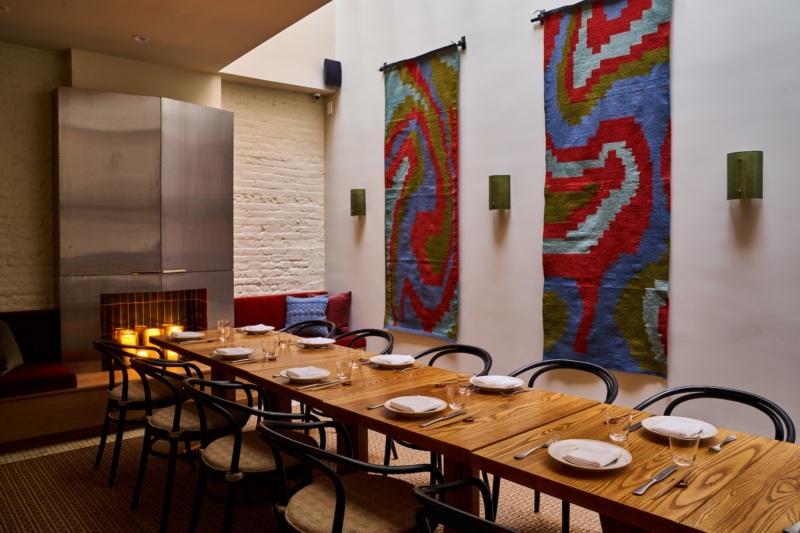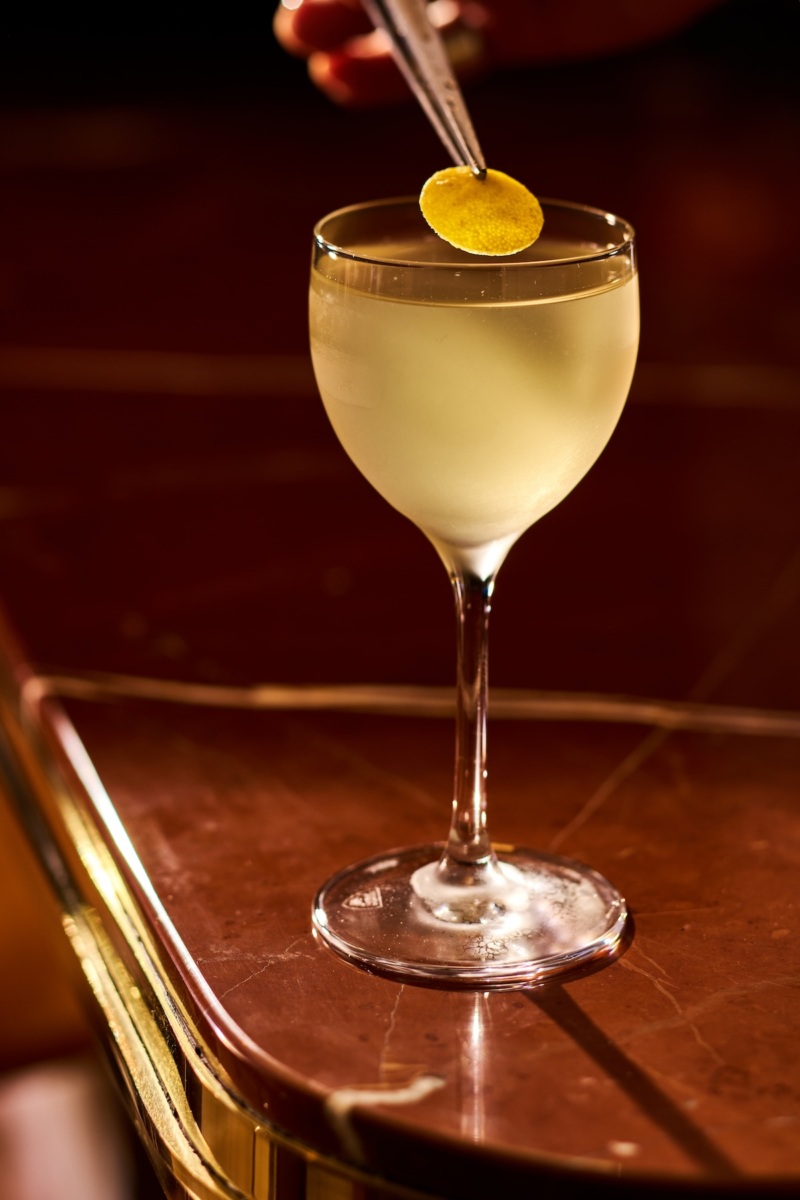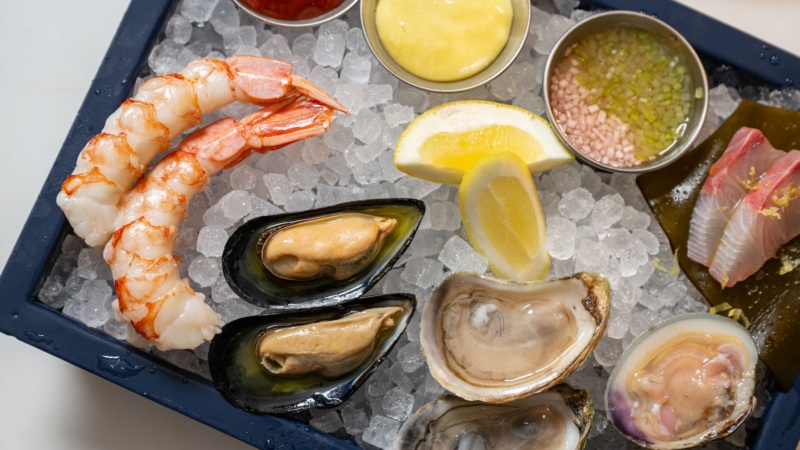
All About Kiko, Opening Soon in Hudson Square
Sommelier Lina Goujjane and chef Alex Chang may be relatively young, but they’re not short on restaurant experience. Gouijane recalls working in her family’s fine dining restaurant around age 14, and Chang opened his first restaurant in Miami at the age of 24. Since then, the wife-and-husband team behind Kiko, a restaurant and bar set to open on Tuesday, Nov.12, on the west side of lower Manhattan, have spent time working at some of the most recognizable fine dining venues in cities across the world, including The NoMad and Majordōmo in Los Angeles and Les Créations de Narisawa in Tokyo.
Kiko, their first project together that’s entirely their own, is going to be different. It features influences from both restaurateurs’ travels and heritage, stretching from Hong Kong to Copenhagen. Here’s everything you need to know about Kiko before you go. P.S. Reservations are now open, too.
The Resy Rundown
Kiko
-
Why We Like It:
Upscale but unpretentious, Kiko serves familiar dishes and classic cocktails made special by its owners’ eclectic global influences and thoughtful ingredient sourcing. The cocktails utilize many of the same flavors as the food, making them perfect for pairing: Don’t sleep on the chicken wing and the margarita. -
Who and What It’s For:
Second dates, indie darlings, wine collectors, post-work gab sessions, impressing your coolest friends from out of town, seeing and being seen. -
Essential Dishes:
The Dungeness crab is served with rice, nori, and a mayonnaise made from the crab fat, all of which you can combine into DIY hand rolls (or however you may prefer). Try the mafaldine for a savory East-meets-West noodle dish loaded with mushrooms and topped with truffle. Meat lovers should try the dry aged bone-in striploin — ideally with a side of rice to soak up the juices.
-
Must-Order Drinks:
The Ume Highball is a refreshing, easy sipper featuring the classic flavor combo of umeshu (plum liqueur) and fresh shiso, along with green tea and vodka, and then the whole thing is force-carbonated. If you’re not drinking, the non-alcoholic Pineapple and Celery Cobbler is a winning choice for something fresh, vegetal, and elegant. -
How to Get In:
Some seats are held for walk-ins, so you may get lucky if you show up on a whim — but your best bet is to book in advance. Reservations drop on Resy two weeks in advance at 9 a.m. -
Fun Fact:
Much of the interior design takes subtle inspiration from seaweed. You’ll notice deep blue and green tones sprinkled throughout the space.



1. The restaurant’s cultural influences span the globe.
Combined, Goujjane and Chang have worked in more cities internationally than some people have visited in their lives. Goujjane was born in Paris and raised in New York, where her family owned and operated the famous One if By Land, Two if By Sea (the restaurant known as a destination for wedding proposals) for decades. She recalls working in the restaurant from the age of 14 and dabbling in virtually every position in the house — except, of course, in the beverage department, which ended up being her core interest. Chang was born in Hong Kong and raised in California; his parents are of Chinese and Mexican descent, and his father has lived in Japan for much of Alex’s life.
Their professional lives have taken them to even more places: Goujjane staged at Amass in Copenhagen, and Chang spent time at Pujol and Quintonil in Mexico City (each of which has two Michelin stars). All of these places and experiences have left some kind of a fingerprint on Kiko. The duo describes the menu as New American with East Asian flavors, with a West Coast emphasis on seasonality, and a wine program with a European sensibility, and while it might sound like a dizzying combination, it’s an eclectic mix that comes together seamlessly.


2. The vibes are of the utmost importance.
Hudson Square, where you’ll find Port Sa’id, is one Manhattan neighborhood that’s still somewhat unsaturated when it comes to restaurants. Gouijane and Chang hope Kiko will become a neighborhood fixture to see and be seen.
“It offers us this unique opportunity to create this energy that’s, for me, reminiscent of all the cool places that would open up at night in Soho when all the stores were closed,” Goujjane says. “People wanted to come out and show up in their best. It feels a little under the radar, a little bit more exclusive. Like, you kind of have to walk that extra two or three blocks to get here.”
And while plenty of restaurateurs put a lot of thought into the ambient music, Chang has gone above and beyond: He’s made a total of 12 playlists that last six hours each, so staff won’t hear the same lineup day after day. The playlists are even structured to create the kind of energy he wants the restaurant to exude throughout the night — think low-key jazz and samba around opening at 5 p.m., and disco and ’80’s throwbacks by 9 p.m.
3. Their menu includes all the basics — and makes them not-so-basic.
Guests at Kiko will likely find the menu to be refreshingly legible. “To be successful in New York, I think you have to appeal to sort of that New York palate,” Goujjane says.
For example, Kiko serves classics like oysters and martinis — except the oysters are served with a red yuzu kosho and turmeric mignonette, and the martini gets the most delicate touch of brininess from sea lettuce rather than olives. In fact, most of their dishes are thoughtful spins on standards, like a chicken wing loosely modeled after Korean crispy fried chicken. Many are made special by carefully sourced ingredients, hand selected by Chang himself.
Below, Chang describes a few core Kiko dishes (and one simple, but very special side), in his own words.


Thrice-Fried Chicken Wing
Makrut lime leaf, sansho, and green peppercorn ($25)
“They’re marinated in fish sauce, garlic, and vinegar, and then fried a few times. A lot of times when I make dishes, I think of things in the same color palette, even if it doesn’t end up looking like that,” Chang says. “It’s yuzu kosho and sansho peppercorn, which is like a green Szechuan peppercorn, some green Tabasco, and makrut lime leaf. A lot of that stuff is dried into spices and dusted on top. And so, with the sansho, you get this, like, super aromatic and citrusy, kind of a little numbing sensation, same feeling as Szechuan peppercorn.”


Holstein Dry-Aged Bone-In Striploin
Brown butter taré, egg yolk ($75)
To pair: Wendy’s Organic Luna Koshihikari Rice ($8)
“We’re going to be sourcing Flannery beef, which is something that I used in California. It comes from Holstein cows, which are cows that are raised for milk, but they have really, really nice marbling. So, we’re shipping that in. I don’t know anyone else in New York who’s using it.”
“I love having rice with my grilled steak, and let it, like, soak up the meat drippings. I want my steak to sit on my rice and just get everything, all the jus, all the flavor, absorbed into it,” he says.
A simple steamed rice side may not seem worthy of mention, but finding the right starch to go with the steaks was sort of a passion project for Alex.
“There’s very little Koshihikari rice that’s organically grown in the U.S.,” Chang explains. He ended up landing on one particular producer, based in the Sacramento Valley in California, headed by a fourth-generation rice farmer by the name of Wendy Tsuji.
“Basically, she taste-tested all the best rice from Japan, which are mostly from Niigata, and she found that the ones that are best to her were organic, so she kind of went on this mission to make this rice,” he says. “It’s a little bit more expensive, but we’ll basically be cooking it in intervals throughout the night. And it’s just this beautiful, creamy, porcelain color, nothing else added to it. I just think it’s just like a really nice backdrop to, like having a roasted chicken dish, or grilled steak or salmon.”
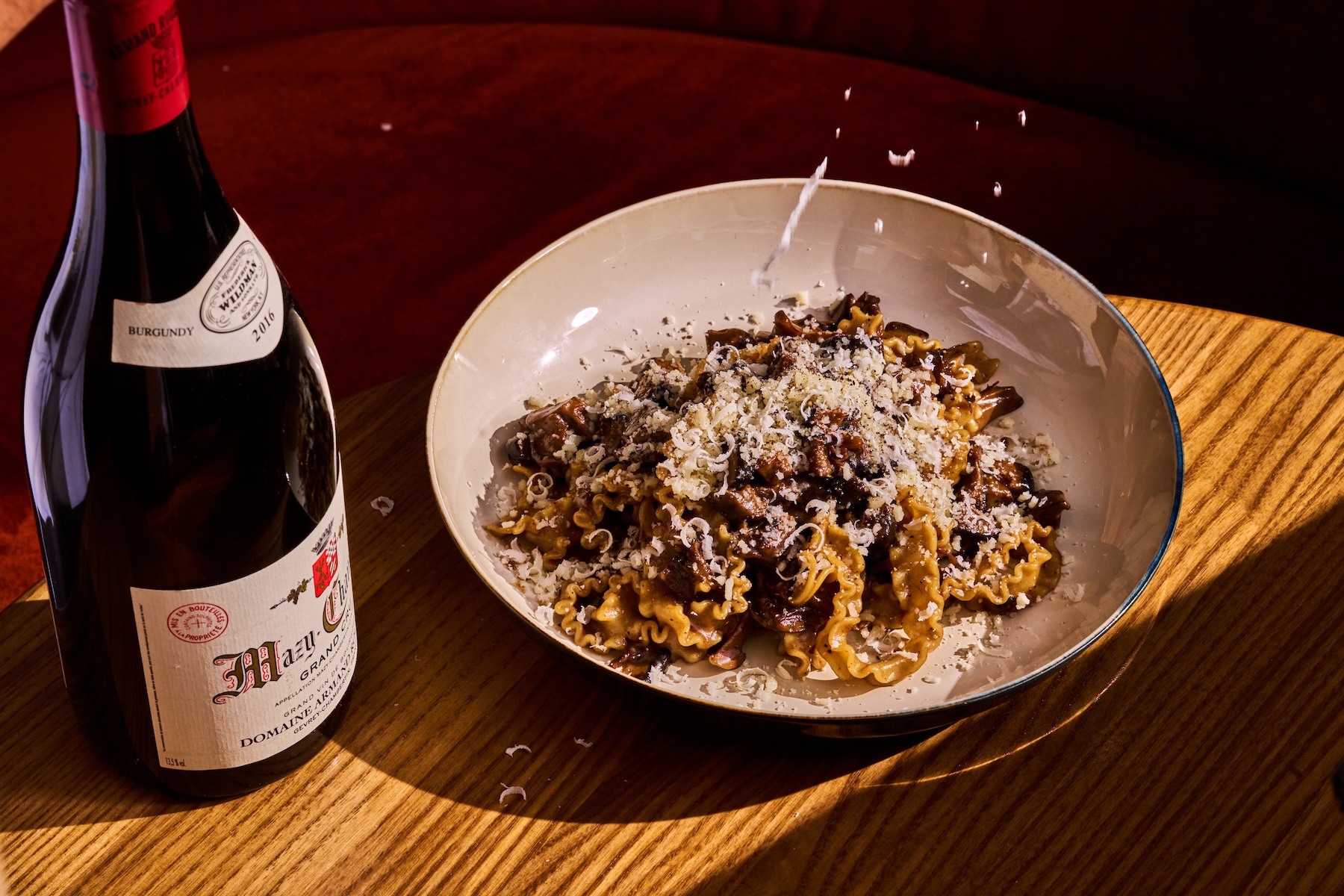

Mafaldine
Hano donko shiitake, black maitake, fermented black beans ($34) with an optional truffle supplement (market price)
While the menu pulls culinary influences from all around the world, Kiko’s owners are careful to make clear that they’re not presenting their dishes as authentic representations of any particular regional cuisine. There is a pasta dish on the menu, but the starch section is broadly titled “Noodles & Rice,” as if to emphasize that it’s not passing itself off as anything approaching traditional Italian.
“The pasta is kind of like a riff on a Korean jajangmyeon, which is basically like a noodle dish with black bean sauce,” Chang says. “But we make it with a bunch of shiitakes and maitakes and add some black truffle butter.”
Funny enough, traditional jajangmyeon is itself a cultural hybrid, having been introduced to Korea by migrant workers from China. Instead of using pulled wheat noodles, however, Chang uses the wide, scalloped-edged pasta noodles, mafaldine. The combination of the savory-sweet fermented black bean sauce and the musky black truffle creates an umami bomb, rounded out by the sweet, nutty brown butter.
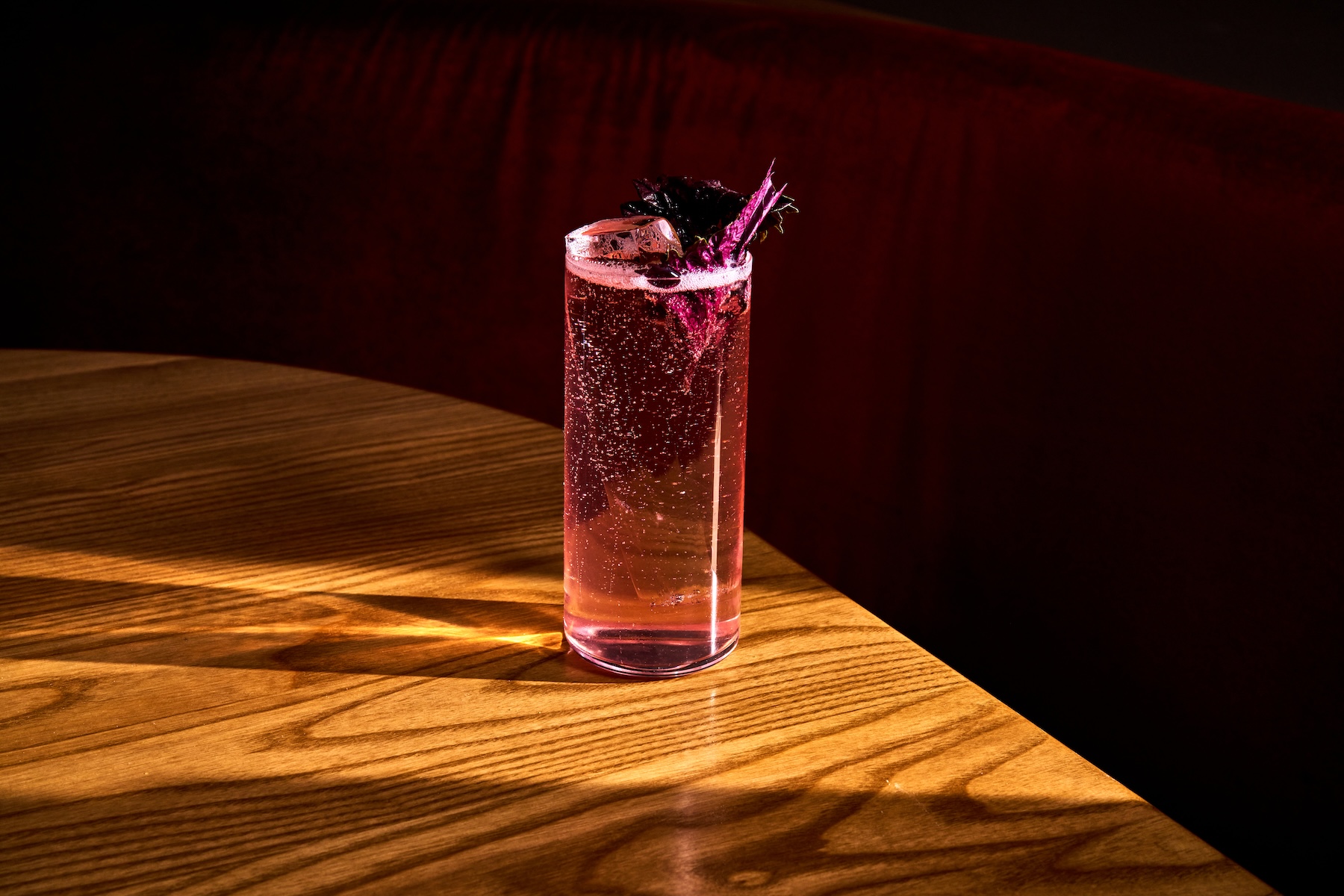

4. Come for a good drink — not an enigma in a glass.
By design, the cocktail menu (which was curated by Chris Lemperle, formerly of SAGA and Overstory) is approachable and easy to understand. Every drink is a play on a classic, like Negronis and highballs, with a subtle Kiko twist.
If you order the Verde margarita ($20), it’s going to be the citrusy Tequila drink you know and love, just accented with ingredients like lemongrass and sancho that mirror the dishes (in this case, the thrice-fried chicken wing). The Sunchoke Old Fashioned ($21) is still dark, sweet, and spirit-forward, but offsets the roasted spice of the rye with a sweet kick of apple brandy, and it’s all tied together with a miso sunchoke-brown butter fat wash.
Goujjane has also curated a robust wine collection, including numerous rare finds that sell in the three-digit ballpark. But knowing that she’s been a sommelier at places with elite wine programs, it probably shouldn’t be a surprise that she’s curated a wine list that’s a real treat for collectors.
But if that’s not you, she doesn’t want you to feel out of place, either. Kiko is simultaneously upscale and unpretentious.
“We don’t want anyone coming in here to have to use their brain,” Goujjane says with a laugh. “Just enjoy yourself.”
Kiko is open for dinner Monday through Saturday starting at 5 p.m.
Ariana DiValentino is a writer, filmmaker, and actor based in Brooklyn. Follow her on Instagram, X, and TikTok. Follow Resy, too.





